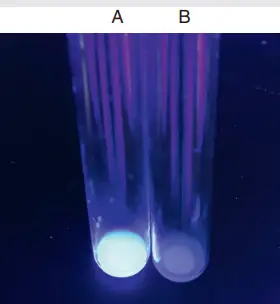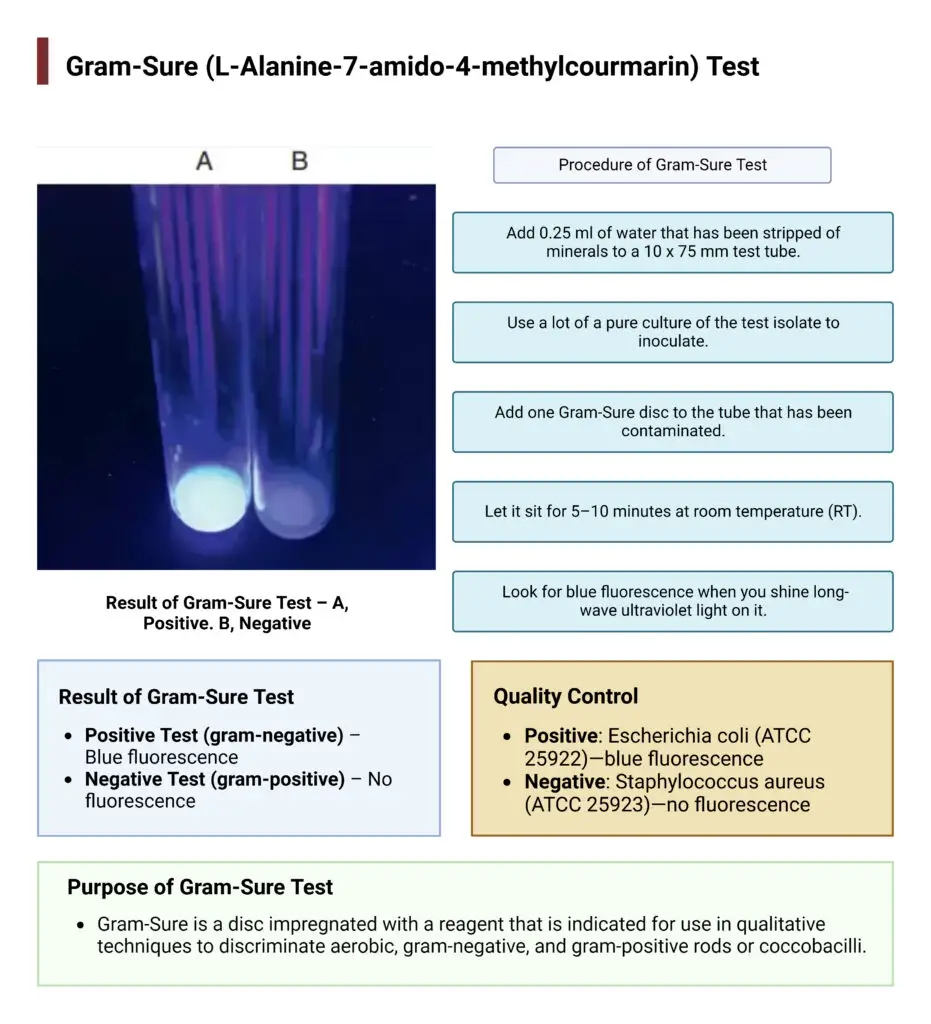Table of Contents
- The Gram stain is typically the initial step in identifying bacteria and frequently dictates future identification methods.
- Misclassification may come from the tendency of some gram-positive rods to seem gram-variable or gram-negative, particularly members of the genera Bacillus, Erysipelothrix, Lactobacillus, and Listeria.
- In 1976, Cerney reported employing L-alanine-4-nitroanilide to identify cell-wall aminopeptidase, which was connected with gram-negative bacteria.
- Manafi and Kneifel assessed the capacity of chromogenic and fluorogenic substrates to distinguish between gram-positive and gram-negative bacteria in 1990.
- They favoured the fluorogenic chemical L-alanine-7-amido-4- methylcoumarin for a quick test because of the strong blue fluorescence of a positive response and higher test sensitivity.
Purpose of Gram-Sure Test
- Gram-Sure is a disc impregnated with a reagent that is indicated for use in qualitative techniques to discriminate aerobic, gram-negative, and gram-positive rods or coccobacilli.
Principle of Gram-Sure
Gram-negative organisms’ cell walls include aminopeptidase, which can be identified through the hydrolysis of L-alanine-7-amido-4-methylcoumarin, a nonfluorescent substrate, into a fluorescent product.
Materials Required
- Reactive Ingredient: L-alanine-7-amido-4-methylcoumarin.
- Loop sterilization device
- Inoculating loop, swabs, collection containers
- Incubators, alternative environmental systems
- Supplemental media,
- Quality control organisms
- Demineralized water,
- 10 x 75 mm test tube,
- Longwave ultraviolet light.
Quality Control
All Gram-Sure lot numbers were tested with the following quality control organisms and determined to be acceptable. The examination of control organisms should adhere to recognised laboratory quality control protocols. Patient outcomes should not be published if abnormal quality control results are observed.
- Positive: Escherichia coli (ATCC 25922)—blue fluorescence
- Negative: Staphylococcus aureus (ATCC 25923)—no fluorescence
Procedure of Gram-Sure Test
- Add 0.25 ml of water that has been stripped of minerals to a 10 x 75 mm test tube.
- Use a lot of a pure culture of the test isolate to inoculate.
- Add one Gram-Sure disc to the tube that has been contaminated.
- Let it sit for 5–10 minutes at room temperature (RT).
- Look for blue fluorescence when you shine long-wave ultraviolet light on it.
Result of Gram-Sure Test
- Positive Test (gram-negative) – Blue fluorescence
- Negative Test (gram-positive) – No fluorescence
Aerobic rods and coccobacilli that are gram-negative glow bright blue, but gram-positive rods and coccobacilli don’t glow at all. This test is meant to be used along with the traditional Gram stain method, not in place of it.

Limitation
- Obligate anaerobic organisms might not work as expected, so this product shouldn’t be used to test them.
- Gram-Sure is just one part of a bigger plan to find out what kind of bacteria they are. For a sure identification, more testing is needed. Refer to the right sources for more information.

